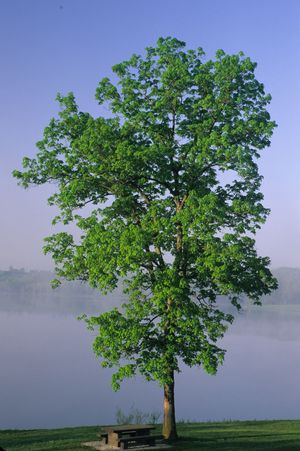Carya ovata
Shagbark Hickory
A large tree of great character, the Shagbark Hickory is found on a broad variety of natural sites making it a highly adaptable species for landscape use. The gray to brown bark peels off in thin sections, curling at the ends while staying attached in the middle. The trunks are usually straight, the foliage has five leaflets and is deep yellow green casting a beautiful light onto the peeling bark. Fall color is rich yellow and golden brown tones. Produces large, edible hickory nuts.
Additional Information:
Crushed leaves have a apple scent. A long lived tree. They are considered to produce a lot of 'litter'(bark and nuts) so place accordingly.Host to a rare Hickory Hairstreak Butterfly.
Height
60-80 Feet
|
 |
Spread
40-60 Feet
|
USDA Hardiness Zone 4-8
Home Owner Growing and Maintenance Tips:
Edible nuts, wood great to flavor bar-b-que, American Indians made cooking oil from the nuts, can use the sap to make syrup, wood is hard and has great character/color variations for making furniture and hardwood floors.
Characteristics & Attributes
Hydrologic Designation
|
Nature Attracting
|
Season of Interest
| • |
Mid (May-June) |
| • |
Late (July-frost) |
| • |
Winter (Nov-Mar) |
| • |
Early (Feb-Apr) |
|
Soil Moisture
|
Special Features
| • |
Nuts |
| • |
Interesting Bark |
|
Sun Exposure
| • |
Full Sun |
| • |
Shade |
| • |
Medium Sun/Average Shade |
|
USFS MO Ecological Map
|
Wildlife Benefit
| • |
Butterfly Host |
| • |
Food/Birds |
| • |
Nesting |
| • |
Cover |
| • |
Food/Small Animals |
|

